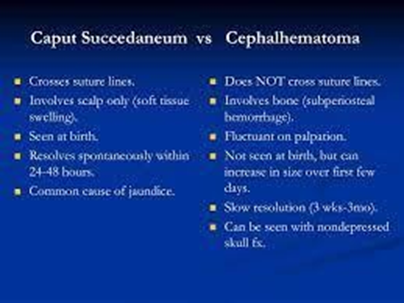A woman gave birth to a 7-pound, 6-ounce infant girl 1 hour ago. The birth was vaginal and the estimated blood loss (EBL) was 1500 ml. When evaluating the woman's vital signs, which finding would be of greatest concern to the nurse?
Temperature 37.4° C, heart rate 88 bpm, respirations 36 breaths per minute, and blood pressure 126/68 mm Hg
Temperature 36.8° C, heart rate 60 bpm, respirations 18 breaths per minute, and blood pressure 140/90 mm Hg
Temperature 38° C, heart rate 80 bpm, respirations 16 breaths per minute, and blood pressure 110/80 mm Hg
Temperature 37.9° C, heart rate 120 beats per minute (bpm), respirations 20 breaths per minute, and blood pressure 90/50 mm Hg
The Correct Answer is D
A. While the heart rate and respiratory rate are elevated, the blood pressure and temperature are within an acceptable range.
B. The heart rate and respiratory rate are within normal limits, and the blood pressure is elevated but not as concerning as other options.
C. The temperature and blood pressure are within normal limits, and while the heart rate is slightly elevated, it is not as concerning as other options.
D. The elevated heart rate, low blood pressure, and elevated temperature may indicate hypovolemic shock, which is of greatest concern given the history of significant estimated blood loss.
Nursing Test Bank
Naxlex Comprehensive Predictor Exams
Related Questions
Correct Answer is B
Explanation
A. A score of 4 would indicate severe distress, but the baby in this scenario shows signs of responsiveness and activity.
B. A score of 6 suggests moderate adaptation to extrauterine life, considering some components of the APGAR are within the normal range.
C. A score of 10 is perfect, but the noted symptoms suggest some difficulties.
D. A score of 9 would be high and not consistent with the observed signs of distress.

Correct Answer is B
Explanation
A. A cephalhematoma is a collection of blood under the periosteum that does not cross the suture lines and can take weeks to resolve.
B. Caput succedaneum occurs due to compression of blood vessels during delivery, resulting in edema and bruising of the scalp. It crosses the suture lines and usually resolves within a few days and does not cause any complications.
C. Erythema toxicum is a rash that is unrelated to head swelling.
D. Mongolian spots are blue-gray patches on the skin, not associated with head swelling.

Whether you are a student looking to ace your exams or a practicing nurse seeking to enhance your expertise , our nursing education contents will empower you with the confidence and competence to make a difference in the lives of patients and become a respected leader in the healthcare field.
Visit Naxlex, invest in your future and unlock endless possibilities with our unparalleled nursing education contents today
Report Wrong Answer on the Current Question
Do you disagree with the answer? If yes, what is your expected answer? Explain.
Kindly be descriptive with the issue you are facing.
